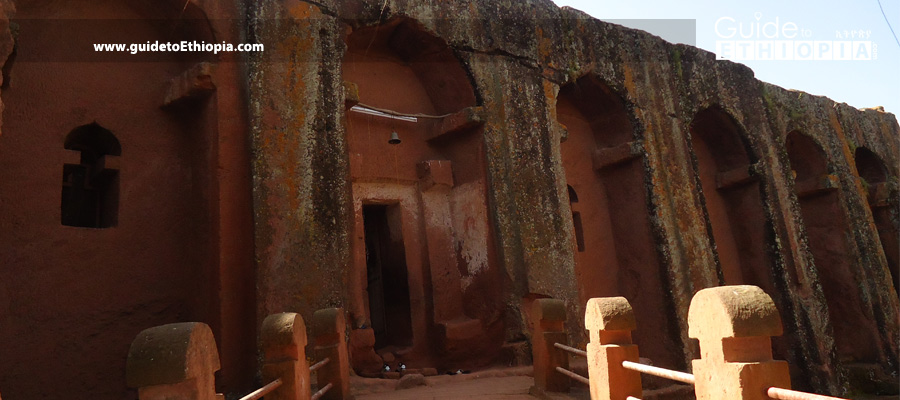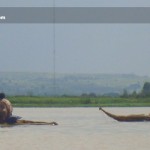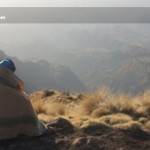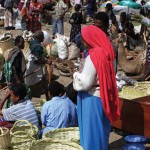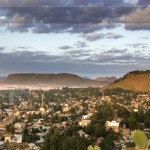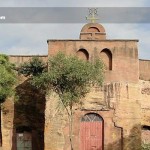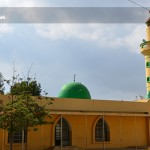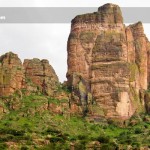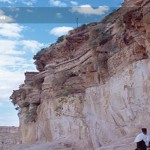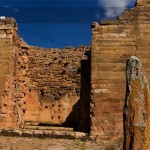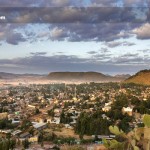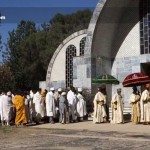Situated at an altitude of about 2500 meters above sea level, the town of Lalibela is 700 Km north of Addis Abeba and 300 Km from Bahir Dar. The quiet town is one of the most historic towns in Ethiopia. Set amidst the Lasta Mountains, Lalibela was actually called by its ancient name of Roha up until recent times. At the peak of the Zagwe dynasty’s (1150-1270) power, in the 12th and 13th centuries, Roha was the capital of the Ethiopian empire and the name Lalibela is that of its greatest and most famous ruler, the 12th century Saint-King Lalibela.
Lalibela is famous for its intricately carved rock-hewn churches, built by the King Lalibela who, according to legend, had the help of angels in completing the monumental task of sculpting entire churches out of single pieces of rocks. It should be noted that aside from building these churches over the course of a quarter of a century, King Lalibela was also responsible for the construction of the old St. Mary of Zion Church in Lalibela, where the Ark of the Covenant presumably resided before it was moved to the newer chapel built by Emperor Haile Selassie.
Bet Medhane Alem–supported by 72 gigantic pillars, the imposing Bet MadhaneAlem Church is the largest of all the churches of Lalibela. Within this monolithic church are three empty graves whose purpose is a symbolical one, one each for the biblical figures Abraham, Isaac and Jacob.
With a bit of luck and/or good timing, one might even get a glimpse of one of the most famous crosses in all of Ethiopia named “Afro Aygeba” which means‘will not return embarrassed (without performing miracles)’ in Amharic. This apparently powerful cross is only displayed on some holidays or Sundays and was only recently returned to its rightful place after having been stolen and sold abroad.
Bet Mariam– the free standing monolithic church of Bet Mariam is a quaint double storeyed structure which is a favorite of pilgrims. It is believed to be the oldest of all the Lalibela churches which were all built approximately 800 years ago.
Frescoes depicting biblical scenes lend character to the walls of Bet Mariam and a cross in the shape of a swastika can also be seen carved into windows. The pool in the courtyard contains holy water which the devout believe will cure female sterility amongst other ailments.
Bet Amanuel – arguably the most architecturally impressive edifice in Lalibela, the freely standing monolithic church of Bet Amanuel is a magnificent, multi-level building unlike any other. The entire façade is covered by painstakingly carved, horizontal even contours which give an especially striking character to the church.Windows cut to resemble Axumite stelae offer evidence of continuity from the great Axumite builders and a deep, dark subterranean tunnel connects the compound to another church: Bet Merkorios which houses several ecclesiastic treasures such as wooden bound manuscripts, brass and gold crosses as well as paintings depicting the crucifixion of Christ done on cotton fabrics
Bet Giorgis – this incredible cross shaped building has come to represent not only the architectural marvels of Lalibela but is also something of a poster child for all the other historical and religious attractions of Ethiopia. It is a freely standing monolithic church which some believe to symbolize the fact that the birth and death of Jesus are underground, owing to the church’s setting beneath the ground so much so that one cannot catch a glimpse of it until the moment that he/she is standing over it.

